Pikmin is a real-time strategy and puzzle video game series created by Shigeru Miyamoto, and published by Nintendo. The games focus on directing a horde of plant-like creatures called Pikmin to collect items by destroying obstacles, avoiding hazards, and fighting fauna that are hazardous to both the player character and the Pikmin.
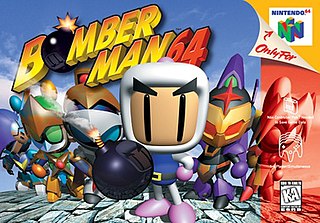
Bomberman 64 is a video game developed by Hudson Soft, published by Hudson Soft in Japan, and published by Nintendo in North America and Europe for the Nintendo 64. The game was released in Europe and North America in November and December 1997, respectively. While the game never saw a release on the Wii's Virtual Console service, it was released on the Wii U Virtual Console in both Europe and North America in March 2017 followed by Japan in June 2017.

Hudson's Adventure Island, known as Takahashi Meijin no Bōken Jima in Japan and also known as Adventure Island, is a side-scrolling platform game produced by Hudson Soft that was released in Japan for the Famicom and MSX on September 12, 1986. Adventure Island was released in North America for the Nintendo Entertainment System in 1988 and in the PAL region in 1992.

The Godfather is a 2006 open world action-adventure video game developed by EA Redwood Shores and published by Electronic Arts. It was originally released in March 2006 for Microsoft Windows, PlayStation 2, and Xbox. It was later released for the PlayStation Portable, Xbox 360, Wii, and PlayStation 3.

The giant squid's elusive nature and fearsome appearance have long made it a popular subject of legends and folk tales. Its popularity as an image continues today with references and depictions in literature, film, television, and video games.

SpongeBob SquarePants: Creature from the Krusty Krab is an action-adventure platform game released for Microsoft Windows, Game Boy Advance, GameCube, PlayStation 2, Nintendo DS and Wii by THQ. An Xbox version may have been planned at some point, but was cancelled for unknown reasons. The PS2, GameCube, and Wii versions are all ports of the same game developed by Blitz Games, while the Game Boy Advance, Nintendo DS, and PC versions were separate games developed by WayForward Technologies and AWE Games respectively. It is based on the Nickelodeon animated sitcom SpongeBob SquarePants, and stars the title character, his best friend Patrick Star and their enemy Plankton as they journey to nine different worlds, supposedly inside the dreams of the characters. The Wii version was a North American launch title. It is also the first SpongeBob game released in Japan, but was released under the title SpongeBob, to mark it as the first video game in the SpongeBob series to have a Japanese release. The PC version of the game is titled SpongeBob SquarePants: Nighty Nightmare.

Elebits, known in PAL territories as Eledees (LEDs), is an action/first-person shooter game developed and published by Konami for the Wii. It was released as a launch title on December 2, 2006 in Japan, then December 12, 2006 in North America, May 4, 2007 in Europe, and May 17, 2007 in Australia.

Dragon Quest Swords: The Masked Queen and the Tower of Mirrors is a role-playing video game developed by Genius Sonority and 8ing and published by Square Enix for the Wii game console. The game is a spin-off from the Dragon Quest series, and was first released in Japan in July 2007, and worldwide the following year.

WarioWare: Smooth Moves is a party video game developed by Nintendo SPD and Intelligent Systems. The game was published by Nintendo for its Wii video game system in Japan in December 2006, and in Europe, North America, and Australia in January 2007. It is the fifth game in the WarioWare series of games, and the only game in the series to be physically released for the Wii. Like its predecessors, WarioWare: Smooth Moves is built around a collection of microgames that last about five seconds each, and which require that the player hold the Wii Remote in specific positions. The game offers the microgames to the player in rapid succession, by first instructing the player to hold the Wii Remote in a specific manner, and then showing them the microgame. The microgames are divided into several stages, each of which loosely connects the microgames with the help of a story. Additionally, this was the first spin-off Mario game to be released for the console.

Escape from Bug Island, titled Necro-Nesia in Japan, is a survival horror video game developed by Spike and released for the Wii in 2006.
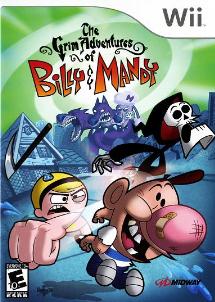
The Grim Adventures of Billy & Mandy is a fighting video game published by Midway based on the Cartoon Network animated television series of the same name. The game was developed by High Voltage Software and released in North America on September 25, 2006, for the GameCube and PlayStation 2, and on November 19, 2006, for the Wii as a launch title. A companion game for the Game Boy Advance, featuring sidescrolling beat 'em up gameplay, was developed by Full Fat and released on October 31, 2006. The Wii version was released in Australia on March 15, 2007, and in Europe on March 16, 2007. The game pits characters from the series against one another in 3D arena battles using various attacks, items, and environmental hazards to eliminate opponents and be the last one standing.
This is a list of characters from the Kirby franchise, who are featured in video games and other media across the franchise.
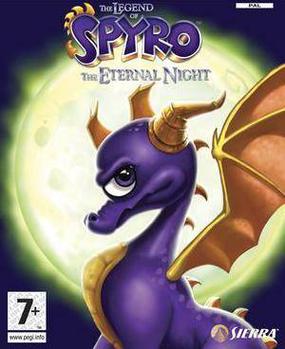
The Legend of Spyro: The Eternal Night is a 2007 action-adventure video game in the Spyro series. It is the second installment in The Legend of Spyro trilogy and the sequel to The Legend of Spyro: A New Beginning (2006). It was released for the Game Boy Advance, Nintendo DS, PlayStation 2, Wii, and mobile.
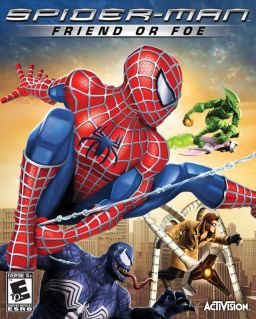
Spider-Man: Friend or Foe is a 2007 action-adventure beat 'em up platform game, based on the Marvel Comics character Spider-Man. The game borrows characters and designs from Sam Raimi's Spider-Man trilogy, with a plot that is non-canon to the films and therefore taking place within a divergent timeline where the villains seen in the films managed to survive. It features two player co-op gameplay, where one player controls Spider-Man and another one of his allies. The storyline of the game revolves around P.H.A.N.T.O.M.s, dangerous creatures created by mixing symbiotes with holographic technology, which a mysterious villain plans to use to take over the world. This villain has also captured and brainwashed many of Spider-Man's foes to help him acquire meteor shards that will strengthen his army. After being recruited by S.H.I.E.L.D., Spider-Man journeys across the globe to retrieve these shards himself and recruit more allies to his cause.
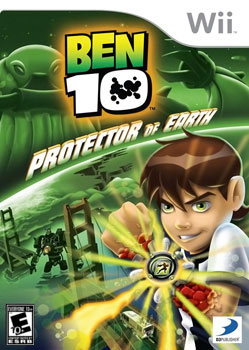
Ben 10: Protector of Earth is an action-adventure video game developed by High Voltage Software and published by D3 Publisher and is based on the animated television series Ben 10. This is the second Ben 10 game following the HyperScan game, is the first official game in the franchise, and it was released for the PlayStation 2, PlayStation Portable, the Nintendo DS and the Nintendo Wii in late 2007.

Pajama Sam: No Need to Hide When It's Dark Outside is a 1996 children's adventure game originally released for PC and Mac. The first game of the Pajama Sam franchise, it sold nearly 3 million units and won 50 awards.
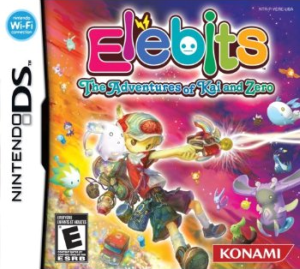
Elebits: The Adventures of Kai and Zero, known as Eledees: The Adventures of Kai and Zero in Europe, and Elebits: Kai wa Zero Sinbihan Yeohaeng in Korea, is an action video game developed and published by Konami. It is the sequel to the Wii game, Elebits.

Dragon Ball: Revenge of King Piccolo, released in Japan as Dragon Ball: World's Greatest Adventure, is a video game based on the Dragon Ball franchise. It was developed by Media.Vision and published by Namco Bandai under the Bandai label. It was released in Japan on July 23, 2009, and in other territories in October of that same year.

Skylanders: SuperChargers is a role-playing platform video game and the fifth installment of the Skylanders series. It was developed by Vicarious Visions and Beenox and published by Activision. It was released on September 20, 2015, for PlayStation 3, PlayStation 4, Wii U, Xbox 360, Xbox One, and was released on October 18, 2015, for iOS. Skylanders: SuperChargers Racing was released as a standalone title for Wii and the Nintendo 3DS on the same date, and focuses on racing. A sequel, Skylanders: Imaginators, was released in October 2016.

















